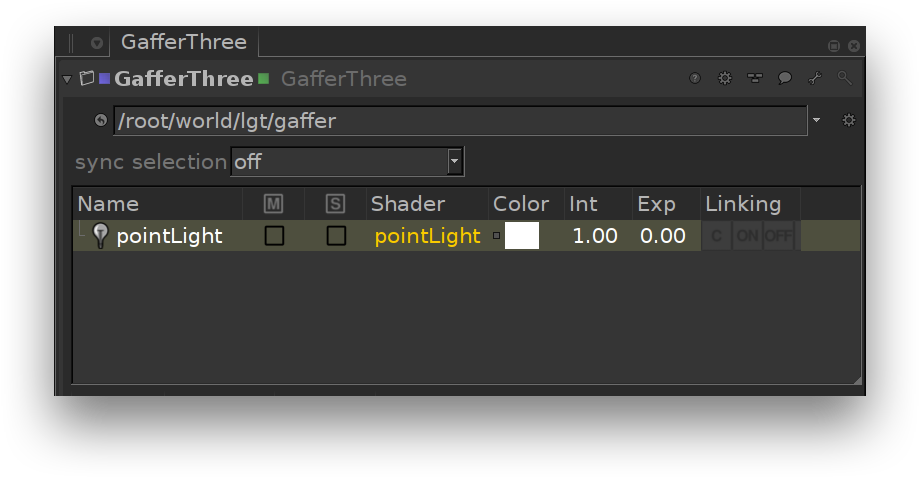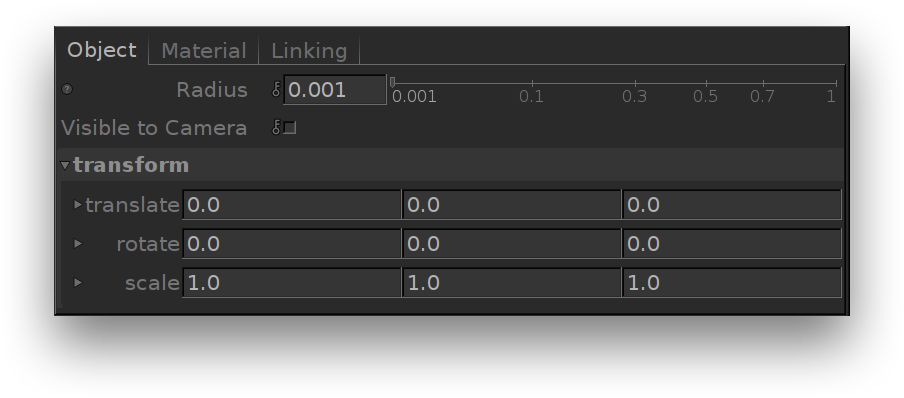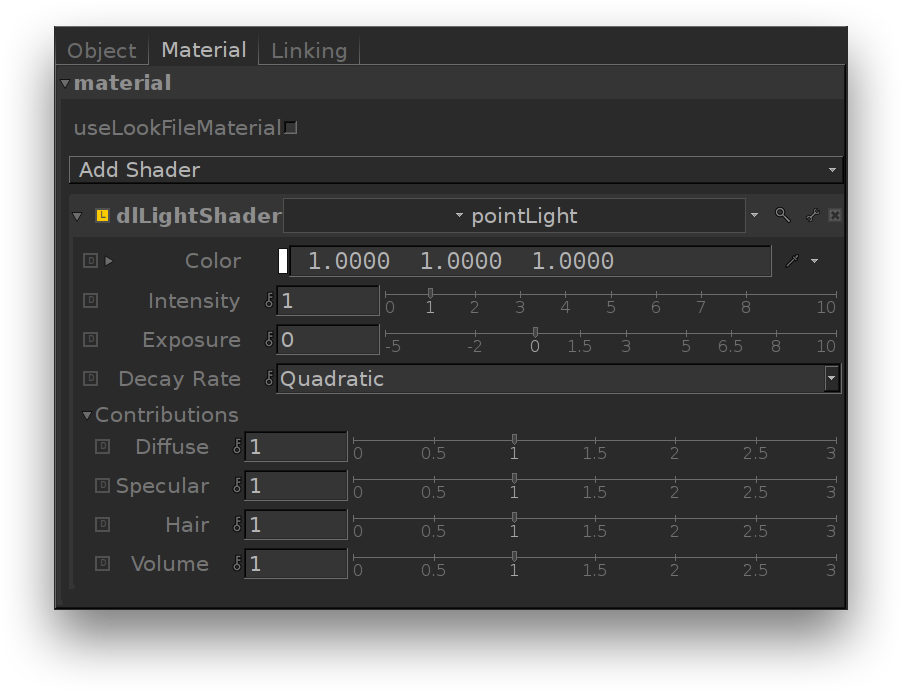The point light is an omnidirectional light source - a small sphere emitting light in all directions.
Creating a Point Light
To create a distant light, right-click in the GafferThree's Object table and select Add → Point Light, or press the P key. A point light appears as a sphere in the Viewer.
A point light in the Gaffer Object Table and in the Viewer.
Positioning a Point Light
The point light's transform can be edited in the Object tab, or interactively in the Viewer.
Adjusting a Point Light Shape Visibility
A point light's light-emitting sphere can be made Visible to Camera in the Object tab.
Controlling the Light from a Point Light
The Object tab allows specifying the Radius of the point light (as is explained in more details below). The Material tab serves to control several light parameters. The effect of these are explained and illustrated in the next sections.
The Object tab of a point light.
The Material tab of a point light.
Radius The radius of the sphere that emits light in all directions. Increasing the Radius will soften the lit region edge and the shadows casted by the spot light.
Visible to Camera Makes the light source visible to the camera (a.k.a primary rays). Since the point light is rendered as a sphere with the specified Radius, the visible shape will be a sphere. Note that a Radius of 0 might still produce a very tiny visible dot. This option is only available in 3Delight for Katana. Color Defines the light color. Intensity Species the light intensity. Exposure This is an additional control over the standard light intensity. Exposure is in many cases a preferred control due to its likeness to photography. Final light intensity is thus computed by: Decay Rate Specify the rate at which the light intensity decreases in function of the distance to the light source. The available values are: It is sometimes useful to have a fine and direct control on how the light intensity affects various shading components. The following controls allows for that: Diffuse Contribution Specifies a multiplier for the light contribution to diffuse shading. Specular Contribution Specifies a multiplier for the light contribution to specular shading. Hair Contribution Specifies a multiplier for the light contribution to hair shading. Volume Contribution Specifies a multiplier for the light contribution to volumetric effects in atmosphere and OpenVDB volumes.Point Light Controls
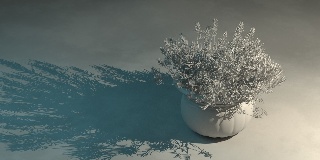
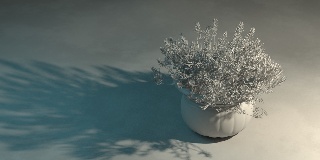
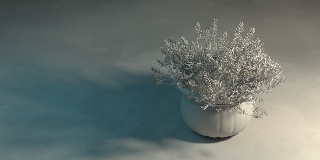
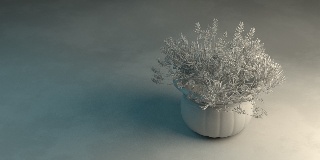
Light Intensity and Color Controls
I = intensity * pow(2, exposure)No Decay
Light intensity remains constant with respect to distance. Linear
Light intensity decreases linearly with distance. Quadratic
Light intensity decreases proportionally to the square of the distance. This is the physically correct behaviour. Cubic
Light intensity decreases proportionally to the cube of the distance. Fine Tuning the Light Contribution to the Shading Components
